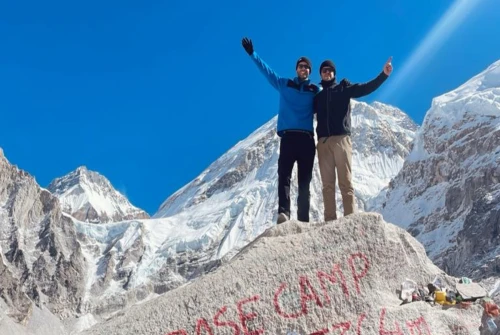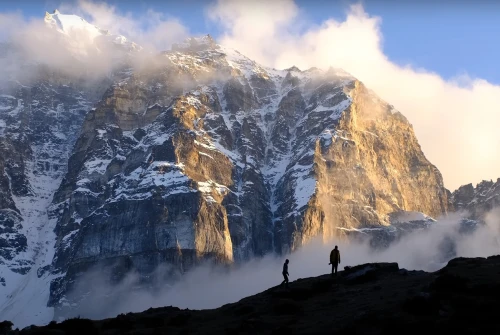Nepal, the land of the mighty Himalayas, is a dream destination for trekkers. From the towering peaks of the Everest region to the lush valleys of the Annapurna circuit, Nepal offers a wide variety of trekking experiences, each with its own appeal. Whether you're looking for comfort, adventure, or cultural immersion, Nepal has something for every type of trekker. In this blog, we'll explore the different types of trekking in Nepal so you can decide which one suits your interests and adventure level.
Types of Trekking in Nepal
Tea House Trekking: The Most Popular Trekking Style
Tea House Trekking is the most common and convenient form of trekking in Nepal. Along the well-traveled trekking routes, you’ll find tea houses or lodges offering food, drinks, and basic accommodation. This style of trekking makes it easy to venture into the mountains without the need for carrying heavy camping gear. It allows trekkers to rest, recharge, and enjoy local food while interacting with other trekkers and the local community.
Pros: Comfortable, sociable, less equipment to carry.
Best For: Beginners, trekkers looking for a balance of comfort and adventure.
Popular Treks: Everest Base Camp, Annapurna Circuit, Ghorepani Poon Hill.
Camping Trekking: Immersion in Nature
For those who prefer more freedom and adventure, Camping Trekking is the way to go. As the name suggests, you’ll camp at designated spots along the trekking route. This style is especially suited for regions where there are no tea houses or lodges, or where you want to get a more intimate experience with nature.
Trekkers need to carry their own camping gear, including tents, sleeping bags, and cooking utensils. Camping trekking offers a true wilderness experience, with the opportunity to camp under the stars and in remote locations.
Pros: Greater freedom, deeper connection with nature, less crowded routes.
Best For: Experienced trekkers, those seeking solitude and adventure.
Popular Treks: Kanchenjunga Base Camp, Dolpo Trek, Makalu Base Camp.
Lodge-to-Lodge Trekking: The Best of Both Worlds
Lodge-to-Lodge Trekking offers a great balance between comfort and adventure. In this style, trekkers stay in simple lodges or guesthouses along the way. The lodges offer basic facilities, including food and lodging, but they are generally more comfortable than camping or tea houses.
This trekking style is ideal for those who want to enjoy the beautiful surroundings while still having the conveniences of a roof over their heads and home-cooked meals. It's a blend of the ease of tea house trekking with the freedom of camping.
Pros: Comfort without full-on camping, cultural immersion.
Best For: Moderate trekkers who want a more flexible experience.
Popular Treks: Annapurna Base Camp, Langtang Valley.
Restricted Area Trekking: For the Adventurous Explorer
Some of the most culturally rich and ecologically sensitive areas in Nepal require Restricted Area Trekking. These areas are off-limits to the general public without special permits to protect their unique cultures and fragile environments. Trekking in these regions requires an additional level of preparation, including extra permits and often a licensed guide.
This type of trekking offers a rare and authentic experience as you'll be venturing into regions few have the privilege to see. The trekking routes are less crowded, and the natural beauty is often unspoiled by mass tourism.
Pros: Exclusive, culturally and ecologically significant regions, fewer crowds.
Best For: Experienced trekkers looking for a unique and off-the-beaten-path experience.
Popular Treks: Upper Mustang, Manaslu Circuit, Tsum Valley.
Peak Climbing Trekking: Conquer the Himalayas
If you're a seasoned trekker seeking a real challenge, Peak Climbing Trekking might be for you. This form of trekking combines the adventure of high-altitude trekking with the challenge of climbing a Himalayan peak. Peak climbing requires technical climbing skills, as well as the proper permits from the Nepal Climbing Association.
These expeditions provide trekkers with the chance to summit smaller Himalayan peaks, usually ranging from 6,000m to 7,000m. It’s an exhilarating and rewarding experience that gives trekkers a taste of mountaineering.
Pros: Ultimate challenge, technical climbing experience, stunning panoramic views.
Best For: Experienced trekkers with climbing skills.
Popular Peaks: Island Peak, Mera Peak, Lobuche East Peak.
Remote Area Trekking: Beyond the Beaten Path
For those who want to escape the crowds and explore the true wilderness of Nepal, Remote Area Trekking is a great option. These treks take you to regions that are far less traveled, offering pristine landscapes, authentic cultural experiences, and total immersion in nature.
Trekking in remote areas often means you’ll encounter fewer people and more natural beauty. It’s perfect for adventurers who want to explore untouched trails, meet local communities, and experience Nepal in its rawest form.
Pros: Solitude, untouched beauty, authentic cultural immersion.
Best For: Adventurous trekkers who seek quiet, remote areas away from crowds.
Popular Treks: Dolpo Trek, Kanchenjunga Base Camp Trek, Makalu Base Camp Trek.
Adventure Trekking: For the Thrill-Seekers
If you're a thrill-seeker who loves adrenaline-packed experiences, Adventure Trekking in Nepal is designed just for you. These treks combine trekking with adventure sports like canyoning, bungee jumping, white-water rafting, paragliding, and more. It’s the ultimate way to combine the excitement of trekking with other outdoor activities.
You’ll find these adventure treks in some of Nepal’s most scenic regions, making the adventure even more thrilling with spectacular views.
Pros: Thrilling activities beyond trekking, variety, adrenaline rush.
Best For: Adventure lovers and those seeking a variety of experiences.
Popular Treks: Around Pokhara (Bungee jumping, paragliding), Trishuli River (white-water rafting).
Cultural Trekking: Explore Nepal’s Rich Heritage
For those interested in exploring the cultural aspects of Nepal, Cultural Trekking is a great option. Nepal’s diverse ethnic groups and rich cultural history make it a perfect place for cultural exploration. Cultural treks typically pass through traditional villages, monasteries, and temples, allowing trekkers to witness local customs, lifestyle, and festivals.
You’ll learn about the spiritual practices, folk traditions, and daily life of the indigenous people while trekking through stunning landscapes.
Pros: Cultural immersion, interaction with locals, historical landmarks.
Best For: Trekkers interested in history, culture, and local traditions.
Popular Treks: Manaslu Circuit, Langtang Valley, Helambu Trek.
Conclusion
Nepal offers a wide variety of trekking experiences, and no matter your preferences or fitness level, there’s a trek for you. From the popular tea house treks to remote, culturally rich regions, Nepal provides an unforgettable adventure for trekkers. Whether you’re looking for comfort, solitude, or excitement, the diverse trekking options ensure that your time in the Himalayas will be an extraordinary journey.
Choose your trek based on your interests, fitness level, and the kind of adventure you’re seeking—Nepal’s mountains are waiting!


.webp)

